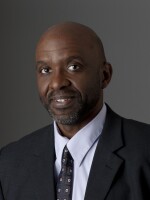President Obama, back from his vacation, is scheduled to address the college affordability crisis in a campaign-style bus tour that will take him to New York and Pennsylvania.
The tour, which takes place Thursday and Friday, is part of the president's overarching effort to highlight his agenda for middle-class Americans and to raise pressure on congressional Republicans to act on his second-term priorities.
White House officials weren't providing many details publicly Monday of what the president will propose during his visits to college campuses in the New York cities of Buffalo, Syracuse and Binghamton, and in Scranton, Pa. Josh Earnest, the deputy White House press secretary, would speak only in generalities at his Monday briefing:
"The president's going to be talking about his view that we need to rein in the skyrocketing cost of a college education; that never has a college education been more critical to the economic success of middle-class families in this country; and if we're going to make sure that middle-class families continue to have access to economic opportunity, that means that more students are going to need to have access to a high-quality college education ..."
It's possible Obama will build on an idea he mentioned during his State of the Union address earlier this year. Back then he proposed that Congress change the Higher Education Act that governs federal student-aid programs to ensure that "affordability and value are included in determining which colleges receive certain types of federal aid."
By taking on soaring college costs, Obama is tapping into the widespread anxiety readily found in many middle-class homes, including the affluent upper-middle class.
Tuition and fee increases that have for years outstripped inflation have made officials and faculties at colleges and universities the targets of angry parents, students and policymakers who blame the rising costs on the profligate ways of academia. Amenities such as campus climbing walls are often used as a shorthand for wasteful spending.
Yet the reasons for relentlessly rising college costs are a lot more complicated than an abundance of climbing walls and other snazzy features. Needless to say, it's difficult to deal with all the complex factors that contribute to these higher costs from the bully pulpit, which is why it would be surprising if the president attempted as much.
(Disclaimer: I have had the honor of serving as a trustee for my alma mater, Dickinson College in Carlisle, Pa., for eight years. So I can attest to the knottiness of college costs and affordability issues that institutions of higher education are grappling with.)
In any case, economists like David Feldman have useful insights. Feldman, chairman of the economics department at the College of William and Mary in Williamsburg, Va., and an expert on what drives costs in higher education, has written about the variance between the popular notion of what is forcing up costs and what the available evidence suggests.
Feldman has found technology to be at the heart of the cost problem. First, it actually hasn't increased productivity of teachers — as it has with factory workers — because students and parents still expect higher ed to be a high-touch experience. Online learning may come to change some of that, but hasn't yet.
Feldman writes that as our society relies ever more on technology, the premium on highly educated workers has increased. College and university faculty are, by definition, highly educated.
And colleges and universities spend a lot of money on technology to give their faculty and students the best chance to compete in an ever more technological world.
"This trio of technological forces explains the entire trajectory of college cost over the last 70 years," Feldman writes.
That's before mentioning the other factors Feldman cites, like the decline in states funding their colleges and universities.
"In 1975, states allocated roughly $10.50 to higher education for every $1,000 of per capita state income. Today the figure is around $6.00, despite a massive increase in the number of students seeking post-secondary education. This type of budgeting has resulted in tuition increases at public universities, which have negatively impacted the availability and quality of their academic programs."
Then there's growing income inequality, with the richest Americans seeing huge income gains as incomes of other Americans have stagnated or retreated in real terms, Feldman says. This has forced many schools to engage in their own form of redistribution, with students from the richest families getting the least discount from tuition possible so that less wealthy students can receive larger discounts.
It's not too dissimilar to how hospitals historically passed along costs of the care they provided to the uninsured to patients with insurance.
All of this leads Feldman to conclude:
"The key affordability issues that I have highlighted are not easily solved with simple policy remedies like tuition caps. They reflect deep structural changes in the U.S. economy and in the states, and these changes have occurred over long stretches of time. Solving the affordability and access issues wrought by these changes requires policies that go well beyond tinkering with higher education programs."
In any event, it will be worth watching to see if, during his college-affordability bus tour, the president addresses the complex reasons behind the rising costs or decides to go for the climbing wall. The latter approach would certainly play into the popular mood but it wouldn't necessarily do much to address the real problems.
Copyright 2021 NPR. To see more, visit https://www.npr.org.





